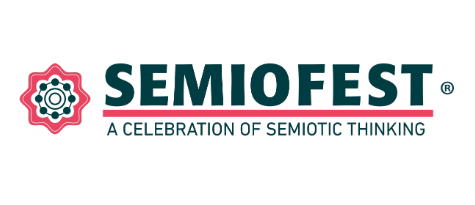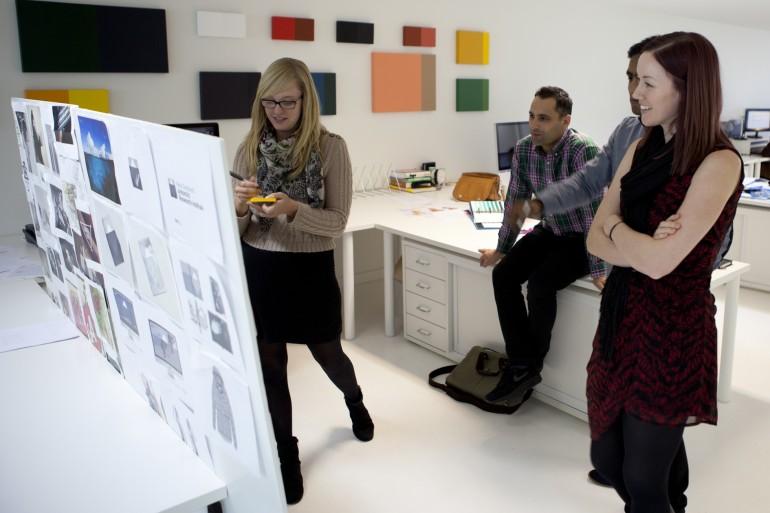

We have delved into and comprehended the intricacies of Chinese culture, translating our insights into actionable brand strategies. Employing semiotics as a research tool for cultural understanding is a practice embedded in our approach at Labbrand. Earlier this year, we were delighted to host Semiofest 2014 in Shanghai, marking the inaugural introduction of this semiotics festival to Asia! The excitement doesn’t end there. Here are the top 10 insights penned by our esteemed friend Hamsini Shivakumar, who chaired this year’s Semiofest in Shanghai.
View presentations and photos of Semiofest 2014.
1. What’s new in rapidly changing China that a cultural insights researcher / applied semiotics practitioner / design person should know?
They should know this about the popular and consumer culture in the China of today:
+ It is now a country of multiple and varied sub-cultures
+ There is a high speed of change in consumption trends
+ There is a high open-ness to other cultures besides the West – Korea and Japan being the leading sources of popular culture material
+ The Government has adopted a ‘citizen-friendly’ face and new styles of communication (e.g. using animated characters)
+ There are 7 emergent communication codes linked to the changing urban culture – brands can use these to connect with the evolving and modern Chinese woman
+ Techno-positivism – compared to Western culture which takes a more mixed view of technology (a utopic and dystopic force), contemporary Chinese culture views technology as a uniformly positive force for change in society.
+ Design trends increasingly draw from social and cultural changes and feed back to them too

2. The digital and fashion worlds have altered some meanings in a fundamental way.
The value structures behind the concepts of genuine vs. fake, spontaneous vs. staged, copy vs. original, illusion vs. real have become more fluid and less fixed in their oppositions. Semioticians need to consider that in contemporary digital and fashion sub-cultures, there is greater acceptance, indeed celebration of ambiguity of meaning. The tools and methodologies for the study of such concepts, therefore need to be carefully chosen and thoughtfully applied. This is especially true for the luxury world which has to combat fake products on an ongoing basis.

3. Brand owners in many sectors tend to fragment the meaning of their brand through their communication history as well as through the various touch-points that they are present in.
This happens because of their tendency to take a marketing/business activity management led approach. Applied semiotics practitioners can use the concepts, tools and methods of semiotics in carrying out the Brand Audit and revealing to clients the negative outcome of such fragmentation on their brand’s meaning to consumers. Tools can also be used to bring back coherence and develop brand guidelines (not just for the brand’s visual identity as is practised today) but to build its symbolic value, residing behind the externalities of image.
4. Brand owners and marketers now work with a wide range of agencies to research and communicate their brand.
Ensuring that the entire team working on the brand, understands the meaning of the brand and its key signifiers vis-à-vis competition in a similar way and pulls the brand together, through their daily work, is an ongoing operational challenge for Marketing Directors. A carefully structured and well-designed workshop in a game format, in which teams work through the semiotic analysis process themselves and absorb the implications can be a very useful tool/service that the Applied Semiotics Practitioner provides to Marketing Directors.

5. Seasoned practitioners who have sold applied semiotics to Clients revealed what works in selling semiotics as a research methodology and/or as the source for a solution to a category, brand or innovation challenge.
+ The first rule is to listen to the Client and gain a deeper understanding of the problem that they are really trying to solve. A corollary to this is that there could be situations where semiotic research is NOT the answer and it is best to tell them so.
+ Second rule, case studies of past successful applications can bring conviction to a new Client, but equally important is the experience and confidence of the practitioner in the value of the methodology.
+ Third rule, with most clients, the Semiotician would be more effective by disguising the theoretical and academic aspects, including drawing references from famous theorists and concentrating on explaining the principles and methods as simply as possible, to show usefulness.
Typical client questions on research validity and reliability considering subjective interpretation can be addressed by showing careful sample selection of the texts/content to be studied as well as getting consumer feedback on the new creative work developed with the use of the semiotic insights.
6. One of the semiotic insights into Chinese culture proposed was the concept of “Markedness” as revealed by spoken language.
Common usages such as ‘how old are you?’ vs. ‘how young are you?’ reveal that in any set of opposing concepts one is more privileged than the other in the everyday usage of language. The silent or unmentioned concept (e.g. young) becomes the ‘marked’ one because the unmarked concept is the one that society and culture considers more desirable or higher status and is understood to be so – hence considered the ‘norm’. When analyzed more deeply, the cultural insights researcher could find the underlying meaning of ‘marked-ness’ in Chinese culture to be social acceptance. ‘Marking’ is a cultural practice of acceptance or rejection. The implication for applied semioticians working in Chinese culture is in understanding the criticality of this idea to Chinese culture and searching for its relevance to their areas of study – be it branding, communication, packaging, innovation etc.
7. The ‘void’ or ‘emptiness’ or ‘nothingness’ is an interesting and profound philosophical concept in Chinese and more specifically Japanese culture as influenced by Zen Buddhism.
How can the void as a concept (the signified) be given semiotic signifiers? One way of representing the void in traditional Chinese art, viz giving it markers and signifiers was to create a blank space in the painting which carried connotations of hidden meanings, leaving the viewer to guess at the hidden meaning indicated by the painter. The other way of representing the void in traditional Japanese culture was to create a rich array of physical symbols and representative rituals – in culture, art and packaging. This presentation with a rich array of examples could provide inspiration for creatives who are asked to create signifiers for an end value or concept which the brand wishes to ‘own’ in shared perception.

8. Colour is one of the very first areas where clients consider the applicability of semiotic analysis and concepts.
Very often, clients think about the connotations of a certain colour in their category/product and wonder whether their understanding is accurate. This is where they could seek the input of a Semiotician. However, an extensive piece of Semiotic research into the signifiers and meanings of colour (specifically Yellow, in English culture) showed that colour is an area with a huge multiplicity of meanings; hence the specific meaning of a colour is strongly linked to its context of usage. General lists of colour meanings such as those that could be easily googled for, have limited validity for practical application. Semioticians would be better placed to go deeper into the culture, the category and the products under study to uncover the signifiers, codes and meanings of colour in order to provide practically useful solutions to their clients.

9. Design practitioners who wish to teach or train students in design practice could benefit from considering some of the models and ways of classifying what they do.
This is especially true when they consider design from a semiotic lens, viz the use of design as a way to convey meanings of various kinds apart from other objectives that the object being designed would need to deliver on.
10. When neuro-scientists and applied semiotics practitioners team up, can the teaming up provide a deeper and clearer insight into the workings of the brain and the creation of meaning?
A neuroscientist studying advertising’s impact on the brain would expose the ad to a sample of people and get a reading of the result as a graph with peaks and troughs. By matching the graph to the flow of the ad in each second, the neuroscientist could identify those images in the ad which stimulate a stronger response in the brain – this would provide proof to scientifically inclined clients that in a 30 second TVC and narrative, there are 5 specific images that create the impact, accurately measured by way of the peak points in the graph. However, the understanding at this point is still incomplete. What emotions are aroused in the viewer that cause the brain movements to peak upon seeing the image? And what is the best way to measure this? Is it by providing the viewer with a word text, a pictorial icon or a human image of the emotion? The experiment conducted showed that when people participating in the experiment were given the human image of the emotion, this helped get the best fit of graph peaks to the emotion experienced. This enabled the research team to complete the story of sign (the image in the ad) and its associated emotion (the emotional charge that makes a signifier out of an image).

A Labbrand Group Company © 2005-2024 Labbrand All rights reserved
沪ICP备17001253号-3* Will be used in accordance with our Privacy Policy
To improve your experience, we use cookies to provide social media features, offer you content that targets your particular interests, and analyse the performance of our advertising campaigns. By clicking on “Accept” you consent to all cookies. You also have the option to click “Reject” to limit the use of certain types of cookies. Please be aware that rejecting cookies may affect your website browsing experience and limit the use of some personalised features.